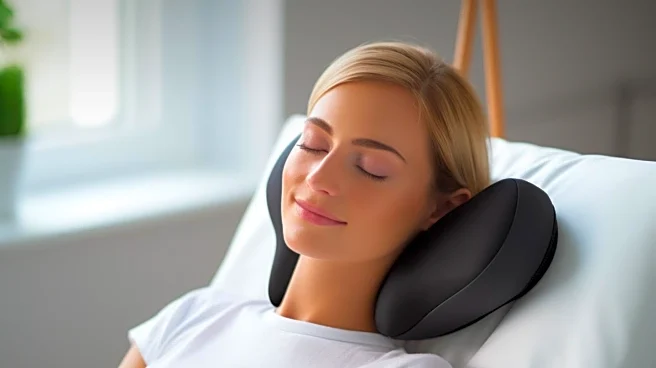What's Happening?
As the U.S. transitions into autumn, many individuals experience mood changes due to shorter days and cooler temperatures. A study by the American Psychiatric Association indicates that 40% of Americans
report mood declines during winter, with women more affected than men. Seasonal Affective Disorder (SAD) is a common condition during this time, characterized by symptoms such as fatigue and lack of motivation. Light therapy lamps, which mimic natural sunlight, are recommended by mental health professionals as a treatment for SAD. These lamps need to emit light between 5,000 and 10,000 lux to be effective, influencing circadian rhythms and mood-related neurotransmitters like serotonin and dopamine.
Why It's Important?
The use of light therapy lamps presents a non-pharmaceutical option for managing SAD, offering a potential alternative to antidepressants. This is significant as it provides individuals with a method to regulate mood and sleep cycles without medication, which can be appealing to those seeking natural remedies. The broader impact includes potential improvements in workplace productivity and overall mental health during the winter months. As SAD affects approximately 5% of American adults, effective management strategies like light therapy can contribute to better mental health outcomes and reduce healthcare costs associated with depression.
What's Next?
With the growing awareness of SAD and the benefits of light therapy, there may be increased demand for high-quality light therapy lamps. Mental health professionals might advocate for their use as a first-line treatment, potentially influencing healthcare practices and consumer behavior. Additionally, further research could explore the efficacy of light therapy in treating other forms of depression, expanding its application beyond seasonal affective disorder.
Beyond the Headlines
The promotion of light therapy lamps highlights the importance of understanding environmental impacts on mental health. It underscores the need for holistic approaches to mental health treatment, integrating lifestyle changes with traditional therapies. This development may also encourage more research into non-pharmaceutical interventions for mood disorders, fostering innovation in mental health care.












